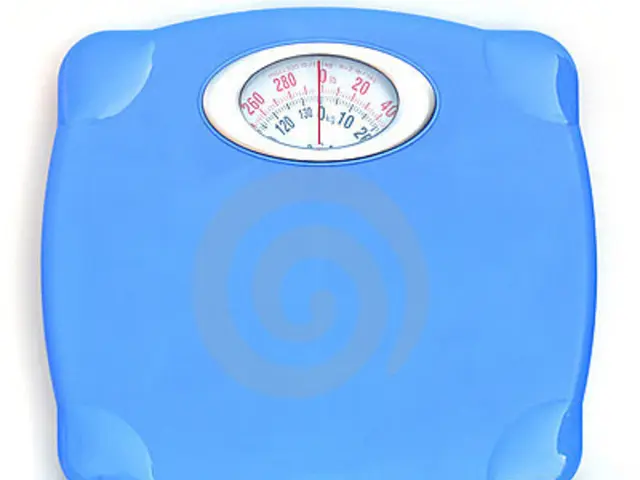The Appropriate Compounds for Passage Through High-Performance Liquid Chromatography (HPLC) Column.
Flex Your HPLC Flow: It's All About Your Column
Strike the right balance between what you flow, what you avoid, and the order - it's all dependent on your column's stationary phase and innate properties.
Let's tackle this scientifically:
Stationary Phase Chemistry
1. RP Columns (like C18):
- Opt for polar or aqueous-organic solvents, such as water/acetonitrile or water/methanol.
- Steer clear of 100% water for extended periods (it can disrupt the hydrophobic phase).
- Shun highly nonpolar solvents; they're incompatible.
2. NP Columns (like silica):
- Prefer nonpolar solvents, such as hexane, ethyl acetate.
- Steer clear of polar solvents or high water content; they can deactivate the silica surface.
3. IE Columns:
- Need buffered aqueous phases with controlled pH.
- Avoid purely organic solvents or pure water unless specifically designed.
4. HILIC Columns:
- Require high organic content (acetonitrile-rich) with small amounts of water.
Column Dimensions and Particle Size Matter Too
Small particle size (≤2 μm, UHPLC columns) necessitates low-viscosity mobile phases for high-pressure systems.
Short columns demand well-matched solvent strength to avoid overwhelming the stationary phase.
Before You Flow Anything, Harmonize:
- Ensure your mobile phases and injection solvent are compatible with your column's stationary phase to avoid phase collapse, silica dissolution, or resin damage.
Pro Tips:
- Know your column first, its material, particle size, bonded phase, then select what flows through it!
- If you're unsure about your stationary phase or compatibility, consult the column user manual provided by the manufacturer.
Caring for your column's needs is the first step towards saving it (and your chromatography quality).
Key Takeaways:
- Not every column takes to the same solvents.
- Not every method tolerates every sample or every mobile phase.
- A successful run starts with matching your mobile phase and its flow to your column.
Delve Deeper:
- The Variety of HPLC Columns in Pharmaceutical Analysis
- Estimating Peak Purity in HPLC
Written by: Abanoub Efraim
Insight Enrichment:
Choosing the proper solvents for HPLC (High-Performance Liquid Chromatography) analyses heavily depends on the type of column employed. Here's a breakdown of recommended and non-recommended solvents for various HPLC column types, along with factors to consider when deciding on mobile phases and injection solvents:
Solvent Recommendations by Column Type
1. RP Columns
Recommended Solvents:- Water as a base solvent- Acetonitrile and Methanol as organic modifiers- Buffer solutions to adjust pH for optimal analyte interaction
These columns are hydrophobic, so water and organic solvents like acetonitrile and methanol are commonly used to create a gradient that aids in separating non-polar compounds.
Non-Recommended Solvents:- Non-polar solvents like hexane or toluene, as they can cause column drying and are not compatible with typical RP column materials.
2. NP Columns
Recommended Solvents:- Non-polar solvents like hexane or toluene- Polar solvents like methanol or ethanol in low concentrations
These columns are hydrophilic, so non-polar solvents are used to separate polar compounds.
Non-Recommended Solvents:- Highly polar solvents like water, which can cause column degradation.
3. IE Columns
Recommended Solvents:- Water with added salts or buffers to adjust ionic strength and pH- Methanol or acetonitrile in low concentrations to enhance resolution
These columns are used for separating charged molecules and require aqueous solutions to maintain ionic interactions.
Non-Recommended Solvents:- Non-polar solvents like hexane, which can disrupt ionic interactions.
4. HILIC Columns
Recommended Solvents:- Water (high percentage in the mobile phase)- Acetonitrile (as a major component with a small amount of water)- Buffer solutions to adjust pH for optimal analyte interaction
HILIC columns are used for separating polar compounds and require a high percentage of organic solvent in the mobile phase.
Non-Recommended Solvents:- Purely aqueous systems, as they can lead to poor retention of polar analytes.
Choosing Mobile Phases and Injection Solvents
When making your selections, keep these factors in mind:
- Solvent Polarity: Ensure the solvent polarity suits the type of column and analytes.
- Viscosity: Lower viscosity solvents (e.g., methanol) are preferable for faster flow rates and better column efficiency.
- UV Absorbance: Choose solvents with low UV absorbance at the detection wavelength to prevent interference.
- Compatibility: Ensure solvents are compatible with both the column and the sample components to avoid column damage or poor separation.
- pH and Buffer Capacity: For ionizable analytes, selecting a solvent and buffer that can maintain an optimal pH is essential.
These considerations help optimize the HPLC analysis by enhancing peak separation, improving detection sensitivity, and ensuring column longevity[1][2].
In the realm of health-and-wellness, a comprehensive report on various therapies and treatments might include scientific findings about the impact of High-Performance Liquid Chromatography (HPLC) on the efficacy of these treatments. For instance, the selection of suitable solvents for HPLC, such as those recommended for RP, NP, IE, or HILIC columns, could significantly affect the separation and analysis of crucial compounds related to these therapies.
Moreover, understanding the implications of solvent polarity, viscosity, UV absorbance, compatibility, and pH on HPLC analyses could lead to more accurate and reliable results, ultimately improving the understanding and optimization of these health-and-wellness therapies and treatments.




